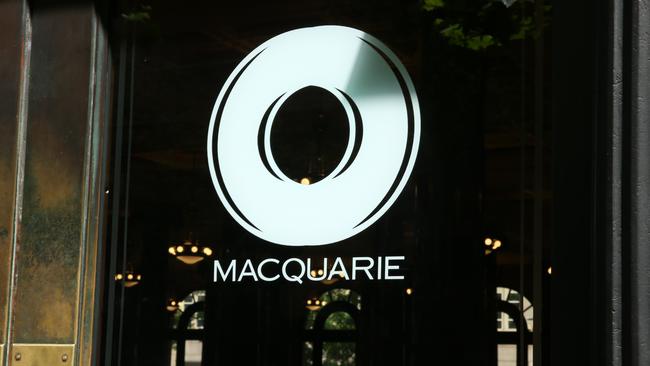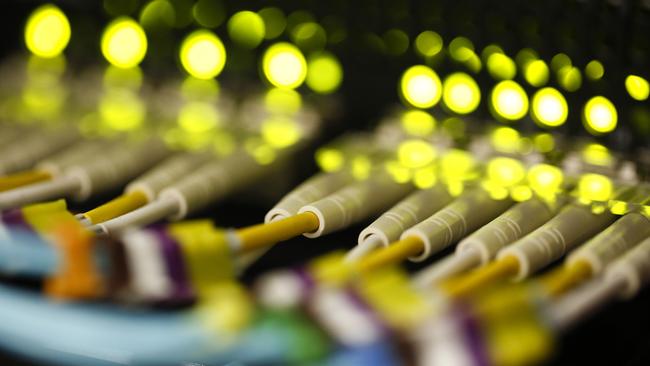
Just weeks after New York asset giant Blackstone paid a stunning $24bn for locally-led data centre operator AirTrunk, another blockbuster digital deal has been signed.
While Macquarie was a seller of AirTrunk, this time it is the buyer of a portfolio of TPG/Vodafone’s intercity fibre assets for up to $5.5bn. The latest transaction takes Macquarie-led spending in the field to nearly $10bn over the past two years. The aim is the same for Macquarie as it seeks to build another AirTrunk.

However, this transaction is all about the plumbing needed to drive the AI boom, rather than the AirTrunk specialisation of digital data centres which house all the computing power.
Project Lighthouse was the name given by Macquarie’s bankers, led by Infrastructure Investment boss Ani Satchcroft, for the long-running buyout of the TPG assets. The reference was to the “light at the end of the tunnel”. An earlier version of the deal was internally dubbed Project Tornado.
The nearly 50,000km of owned and leased optic fibre and some submarine cables was mostly built up by former TPG boss David Teoh as he was making inroads into Telstra’s broadband business.
Macquarie and its long-time partner, Aware Super, got a big foothold in cable when they took network operator Vocus private for $3.5bn nearly four years ago. This was before the AI revolution really took hold. The TPG deal more than doubles the Vocus footprint and builds capacity for future growth in data demand.
“Digital infrastructure is obviously becoming increasingly critical, and the ability to serve people at scale and as well as securely and reliably is important,” Macquarie’s Satchcroft tells The Australian.
It all plays into the digitalisation thematic now driving Macquarie. This is about serving more people faster, securely and at scale. And AI has only delivered a step change in terms of demand for connectivity.
“Vocus has been investing organically to grow out its network, but the opportunity to buy the TPG network, just turbo-charges the Vocus offering and gives customers a good, safe, secure, scaled alternative”.
Project Lighthouse has been about two years in the making. Talks went cold in November last year, given the complexity of the deal and TPG laying the groundwork for its regional network sharing deal with Optus.
Macquarie and Aware were eyeing a bigger holding of TPG’s fibre assets, which would have come with a $6.5bn price tag. However, the telco carved some assets out of the transaction to hold them back for the Optus deal.
Some fibre in the ground was needed for that transaction to push ahead. TPG also gets ultra long-term access to the network at discounted rates.
For TPG boss Inaki Berroeta the deal allows him to cash in on the value of the telco’s fixed infrastructure assets in the midst of an AI boom. This too gives him the option of paying down debt and returning some funds investors, including Teoh – a 14.2 per cent TPG shareholder.

The buyout comes during an AI capex boom. The so-called Magnificent Seven tech stocks in the US are expected to collectively spend more than $US500bn in capex and R&D over the next year.
However, players like Morgan Stanley believe the full-blown AI spending could be as much as about $US1 trillion once the whole tech supply chain is included from data centres, energy and water infrastructure, and other operating expenses.
To put that in context, in just four years AI spending has come from nowhere to now rival the annual US defence budget.
Just last month, the world’s biggest asset manager, Blackrock, teamed up with Microsoft to launch a $US30bn investment fund to build data centres and energy projects. Microsoft is a foundation customer of Telstra’s new 14,000km high-capacity fibre network it is currently building out.
Like with any boom, there is a chance that capital is misallocated, and this is starting to be felt across some areas of renewable spending.
But Macquarie is moving early. With digital demand escalating, it is carving out territory and that’s around enabling AI infrastructure. For Macquarie, it’s all systems go.
eric.johnston@news.com.au




The AI revolution is not just taking place in Silicon Valley. A digital land grab is now under way around the world, and Australia’s Macquarie is right in the middle.